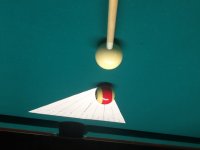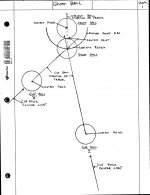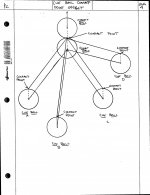You're right. I've been reading forums here for years, just never joined until last week. This is a great place to learn about everything pool-related. Most of the people that post are very knowledgeable and entertaining. So when I finished my book there was no doubt as to where I'd introduce it. I mean, this website is the hub of the pool world. I'd be a fool not to take advantage of the opportunity. But I do apologize if I came off as overbearing. I'm not a salesman. I'm a pool player. The material will sell itself.
I really do hope that your book sells well. I'm sure there's plenty of good info in it.
I've tried using many aiming systems in the past... some good.. some gimmicks.
I don't know how you find your angles for aim points, but I think standing behind
the shot, to find your pocket angle behind OB, can be improved on. So I'll ask if
you clicked the link in post #1 and what was your take on front of the OB aiming.
To be fair to CJ and TOI, it wasn't completely magical.. tho' he made it sound so.
You can't play all shots using TOI but it certainly does have some playing merits.
(Hope this doesn't open a can of worms)
Poolology - best of luck. Carl
.


